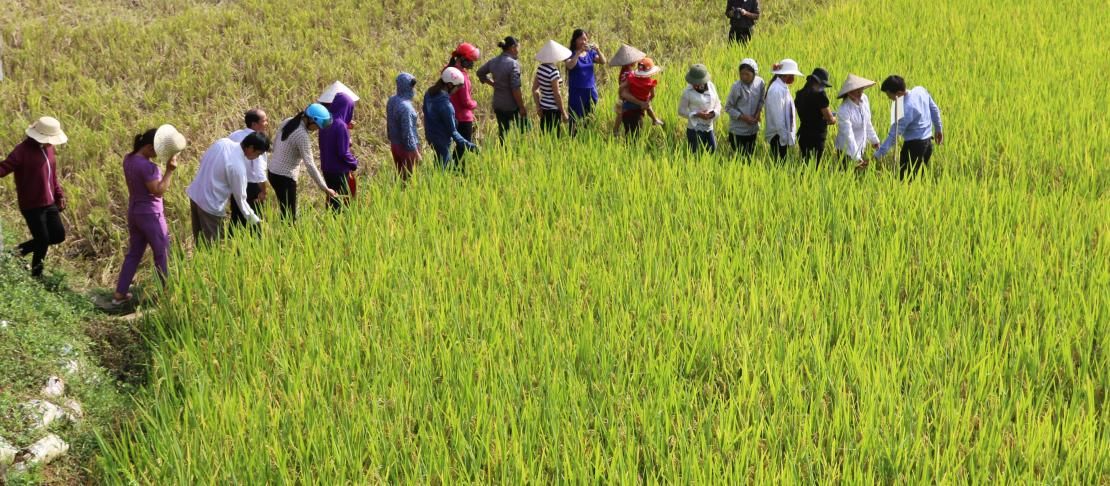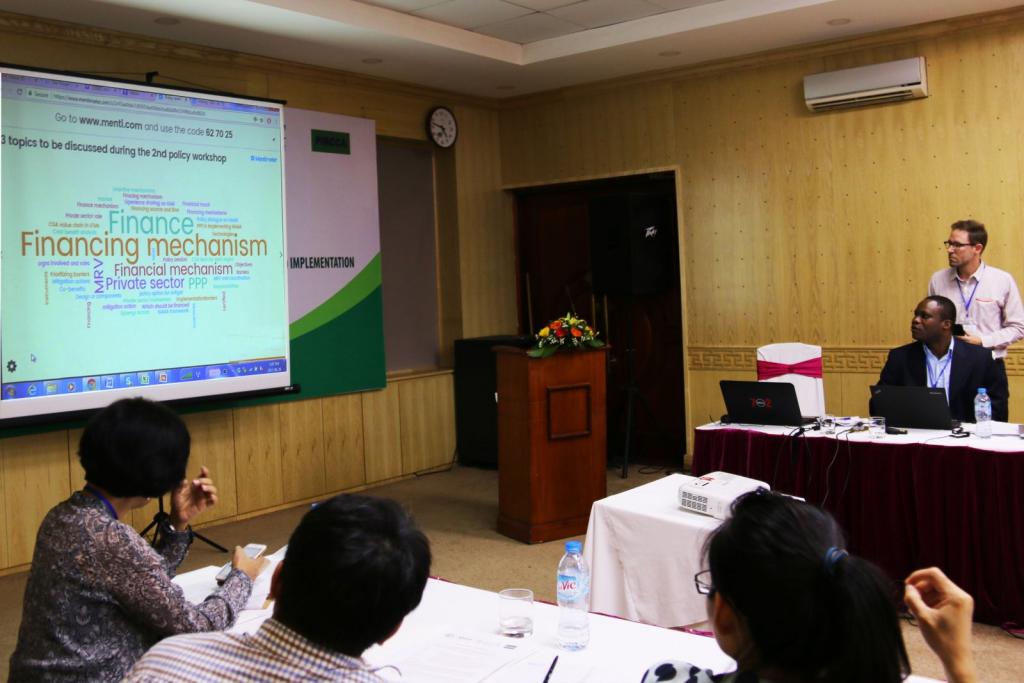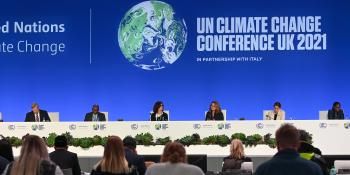Climate experts identify building blocks of Vietnam’s mitigation actions in rice

What does it take to plan and implement mitigation initiatives in rice production more effectively? Experts weigh in on science-based options for rice NAMAs in a policy workshop.
Vietnam has been taking decisive steps toward achieving a low-carbon rice sector. The country, through its Nationally Determined Contribution (NDC), has pledged to cut its greenhouse gas (GHG) emissions by up to 8%, which could be further increased to 25% through international support, by 2030 compared with the business-as-usual (BAU) scenario.
This is a significant contribution to the mitigation initiatives of Vietnam especially as it has the highest emissions from rice production in the Southeast Asia region (FAOSTAT, 2012).
Recently gaining momentum in Southeast Asia, NAMAs are proposed mitigation measures to reduce emissions below BAU levels contributing to sustainable development. It can take the form of a program, policy, regulation, or an incentive.
In developing rice NAMAs for Vietnam, experts stressed that they should be inclusive and appropriate to the needs and capacities of the communities, have institutionalized financial mechanisms and economic incentives, and forge strong collaboration among stakeholders.
Despite these, mitigation efforts in the country are constrained by a number of challenges.

Stakeholders discuss the development of NAMA in support of NDC implementation in Vietnam’s rice sector. Photo: E. Bernardo (CCAFS SEA)
Mitigation challenges and opportunities
A study conducted by the International Rice Research Institute (IRRI) and the Southeast Asian Regional Center for Graduate Study and Research in Agriculture (SEARCA) looked into the implementation of Vietnam’s climate change policy particularly on mitigation actions in rice production.
Vietnam has strong institutional mandates on climate change policies but lacks clear policy guidelines and inducements to stimulate stakeholders’ participation,” reported Dr. Lucrecio Rebugio, SEARCA consultant, in a climate policy workshop on NAMA Formulation in Support of NDC Implementation on Vietnam’s Rice Sector held on 20 June 2017 in Hanoi.
Vietnam’s Institute of Agricultural Environment (IAE) and the Institute for Policy and Strategy for Agriculture and Rural Development co-organized the event under two IRRI projects: (1) Reducing Methane Emissions from Paddy Rice Production in Vietnam project being funded by the Climate and Clean Air Coalition (CCAC), and (2) Policy Information and Response Platform on Climate Change and Rice in the ASEAN (PIRCCA) project, funded by the CGIAR Research Program on Climate Change, Agriculture and Food Security (CCAFS).
A policy gap analysis conducted by Ms. Nguyen Thi Dieu Trinh of Vietnam’s Ministry of Planning and Investment (MPI) complements SEARCA’s study and points to the importance of integrating climate resilience and low emission rice development in revising the current Rice Restructuring Strategy. “It should identify emission reduction targets, technical solutions, and estimated investment needs,” Ms Dieu Trinh emphasized.
In his presentation, Valerien Pede, senior scientist at IRRI, emphasized the importance of bridging the gap between science and policy.
For effective policy engagement, knowing national priorities and getting the interest of policy makers is a must. Producing scientific reports and publications is not sufficient to influence policy but recommendations should be translated into clear spatial and temporal priorities at different scales,” he explained.
Meryl Richards, CCAFS expert on low emissions development, shared findings from their project on developing low emissions development investment plans for the rice sector in the Mekong River Delta. She challenged the participants to make sure that products of research feed into NAMA proposals.
Dr. Mai Van Trinh of IAE gave an example of such research output and presented the results of a cost-benefit analysis of GHG mitigation options in the Mekong River Delta. The alternate wetting and drying (AWD) technology, for example, has been proven to be suitable in the area in terms of reducing water use and mitigating GHG emissions in rice production. AWD can also provide higher profit to farmers, hence, a good fit for a NAMA.
“The analysis will help meet these demands from an investment point of view,” said Ms Dieu Trinh and emphasized the role of the private sector:
I encourage the group to make the research results more appealing to the private sector as they could potentially support NAMA programs.”
Participating climate experts and policymakers also raised some constraints that deter the planning and implementation of a rice NAMA in the country like the lack of an approved Measurement, Reporting and Verification (MRV) system at all levels and the limited access to national and foreign climate finance. The group expressed the need to identify avenues on how to fund a rice NAMA as well as to establish creative and sustainable financial mechanisms and incentives for projects and activities within a rice NAMA.
A promising model for NAMA initiatives
A concrete example of NAMA in the works is the Thai Rice NAMA project.
The Thai Rice NAMA project, which is now in the proposal development stage, will adopt the Sustainable Rice Platform (SRP) Standard which pushes for resource-use efficiency and sustainability in the rice sector.
“The Thai rice NAMA aims to reduce greenhouse gas (GHG) emissions, mainly methane, from irrigated rice cultivation in six focus provinces in the Central Plains of Thailand. The project expects to involve 100,000 rice farming households, and farmers’ organizations in the drive to reduce GHG emissions from rice fields,” explained Dr. Reiner Wassmann, climate change expert at IRRI.
By and large, mitigation initiatives are for the long haul but appropriate plans and climate policies need to be firmed up urgently for ground actions to effectively materialize. In the case of Vietnam, the government is clearly taking significant and decisive steps toward achieving their mitigation targets.
The 1st Stakeholder Engagement Workshop: NAMA formulation in support of NDC implementation in the rice sector of Viet Nam, organized by IRRI and the CCAFS SEA together with Vietnam’s Institute of Agricultural Environment and Institute for Policy and Strategy for Agricultural Development, was held on 20 June 2017 at the Women Development Center, Hanoi, Vietnam.
Related articles:
From concept to action: How IRRI supports mitigation plans for rice in Asia?
Emissions from smallholder farming may be significant; mitigation recommendations
Eisen Bernardo is the Senior Communication Specialist of CCAFS Southeast Asia.
Bernadette Joven is a senior communication specialist for the International Rice Research Institute.




